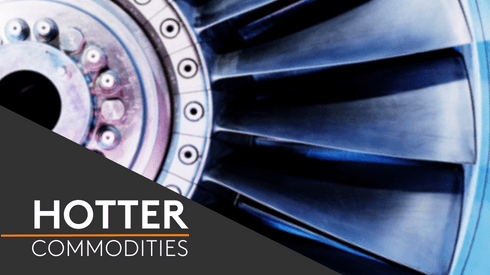The commodities mining and marketing company is juggling the goal of achieving net-zero carbon emissions by 2050 with the fact that its coal business is making it filthy rich — quite literally.
The company’s industrial coal business accounted for a whopping $17.9 billion of adjusted earnings before interest, taxes, depreciation and amortization (Ebitda) in 2022, a rise of $12.7 billion from the previous year.
That’s almost 66% of its total industrial Ebitda of $27.3 billion and, while there was no breakdown of coal’s contribution to its marketing business Ebidta of $6.4 billion, it doesn’t take a genius to work out that the dramatic rise in prices for the product would have been in Glencore’s favor.
After all, coal experienced record average prices in 2022, with the globalCOAL Newcastle price rising 163% from its 2021 average. It all helped lift Glencore’s total Ebitda, including industrial and marketing, to $34.06 billion — up from $21.32 billion the year before, which means, at the very least, coal accounts for more than half of that total.
But Glencore’s plan to eventually exit coal, while at the same time increasing production and gobbling up equity stakes in other coal assets, is not sitting well with an increasingly vocal portion of its investors — something it is well aware of.
“A limited number of shareholders looked for opportunities to accelerate our current total emissions reduction pathway — a 50% reduction by 2035 — while some raised the prospects for incremental growth in our coal production,” Nagle said on Wednesday February 15 in his review of the year based on the company’s 2022 results.
“However, the overwhelming majority of shareholders reiterated their support for our current responsibly managed coal decline strategy and associated targets,” he added.
Shareholder revolt
The problem is that “limited number” includes almost a quarter of Glencore shareholders who voted to reject its climate plan at the company’s last annual general meeting.
And they include a group, led by Legal & General Investment Management and HSBC Asset Management, which last month co-filed a shareholder resolution demanding more information on how Glencore’s exposure to thermal coal is aligned with the goals of the 2015 Paris Climate Agreement and its net-zero commitment.
Other companies to join the resolution include Australian super-fund Vision Super, along with the giant Switzerland-based Ethos Foundation, whose 246 members — mainly pension funds — collectively manage $400 billion of assets.
Their objection is that of all the fossil fuels, coal emits the most carbon dioxide (CO2) per unit of energy. According to the International Energy Agency, CO2 emitted from coal combustion was responsible for more than 0.3°C of the 1°C increase in global average annual temperatures above pre-industrial levels, making coal the single largest source of global temperature increases.
Positioning Glencore as a responsible steward that will manage its coal assets into decline instead of selling them to a company that may mismanage, even expand them, does not ultimately matter if those emissions continue to exist.
Glencore response
Glencore’s public response to the coal conundrum has been to promise an updated climate report in March, with more detail on progress plus board and management governance of the issues at stake.
It will be necessary. To the untrained eye, Glencore is acting against the climate values it strives to achieve. It bought out a number of its minority joint venture partners in its Australian operations, and acquired the interests of its joint venture partners, BHP and Anglo American, in the Cerrejón mine in Colombia.
Glencore’s production of thermal coal, used in the generation of electricity or heat, accounts for the lion’s share of its total coal output, which rose by 6% to 110 million tonnes in 2022. Its production of metallurgical coal, which is used in steelmaking, is a much smaller proportion of the overall mix.
But at the same time, the company is working to phase out its coal operations. It plans to close 12 coal operations by 2035, including three in Australia this year and next — Newlands and Liddell in 2023 and Integra in 2024.
Glencore is also investing in carbon capture, utilization, and storage (CCUS) technology, with a trial project to capture CO2 from the Millmerran coal-fired power station in Australia and transport it to a storage site in the Surat Basin.
The company is keeping its coal production guidance at around 110 million tonnes for the next few years and is simultaneously investing in energy transition metals such as nickel in Canada and copper in Chile, as well as in recycling and other copper, cobalt, nickel and zinc projects. It’s also, according to Nagle, starting to dabble in lithium – a critical mineral used in batteries for electric vehicles. This is all positive, at the very least because Glencore is going to be in need of new revenue streams when it has exited coal — especially given the oversize role it has in its current portfolio.
It’s not, therefore, being inactive on coal. But, for some, it’s not being active enough.
It’s a tough balancing act for Nagle, who cut his teeth at Glencore in the company’s coal business. After joining Switzerland in 2000 as part of the coal business development team, Nagle then worked for five years in Colombia as CEO of Prodeco, it’s Colombian coal operation.
Many would argue that Nagle turning his back on coal, at a time of significantly stronger prices due to an ongoing energy crisis and supply constraints in major producing nations, would be an even riskier move than keeping it in the portfolio. It is, after all, a transition and not an overnight change; and demand for coal isn’t going anywhere fast.
The shareholder resolution seeking increased transparency will be voted on in May. Whatever it does in the meantime, Glencore can expect investors to keep turning up the heat on coal.





